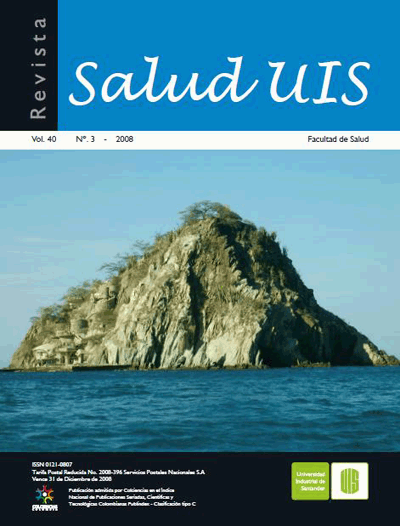Resumen
RESUMEN
INTRODUCCIÓN: El peso al nacer es un indicador útil para evaluar las perspectivas de supervivencia infantil y la salud del niño durante el primer año de vida. Objetivo: Estimar la proporción de BPN y la tasa de mortalidad perinatal en una institución pública de salud de tercer nivel de complejidad de Bucaramanga.
MATERIALES Y MÉTODOS: Estudio, retrospectivo, descriptivo. Se midieron las variables edad gestacional, sexo, peso, talla, perímetro cefálico y tipo de parto. Para el análisis descriptivo, se calcularon medidas de tendencia central y dispersión con intervalos de confianza del 95% para variables cuantitativas y proporciones para variables cualitativas.
RESULTADOS: La proporción de BPN fue 17,79% (IC95%: 16,5% -19,1%). La tasa de mortalidad perinatal fue 16,4 por 1000 nacidos vivos; un alto porcentaje de los RN fallecidos presentó BPN (83%). El 77,8% de los RNBP presentó retraso del crecimiento asimétrico y el 22,1% retraso del crecimiento simétrico.
CONCLUSIÓN: La alta proporción de BPN y la elevada TMPN encontradas en este estudio fueron similares a las reportadas en un hospital universitario de referencia para gestantes de alto riesgo (19,5%). Salud UIS 2008; 40: 185 - 190
Palabras clave: Bajo peso al nacer, mortalidad perinatal, retardo del crecimiento intrauterino
ABSTRACT
INTRODUCTION: The birth weight is one of the most useful indicators to evaluate the perspectives of infantile survival and health during its first year of life. Objective: To estimate proportion of low birth weight (LBW) and the perinatal mortality rate (PMR) in a public institution of health of third level of complexity of Bucaramanga.
MATERIALS AND METHODS: Retrospective and descriptive study. Data like gestational age, gender, weight, height, cephalic perimeter, childbirth type was taken. In the descriptive analysis, the quantitative variables were calculated the measures of central tendency and dispersion with intervals of trust of 95%; and for the qualitative variables the respective proportions were calculated.
RESULTS: Proportion of LBW was of 17.79% (IC 95%: 16.51%-19.13%). The perinatal mortality rate was 16.4 per 1000 live births and a high percentage (83%) of the passed away RN displayed BPN. The 77.8% of newborns with low birth weight, stunted presented asymmetrical and 22.1% growth retardation symmetrical.
CONCLUSION: The high proportion of LBW found in this study is similar to that found in a university hospital in reference to high risk pregnancies (19.5%). Salud UIS 2008; 40: 185- 190
Keywords: Low birth weight, perinatal mortality, intrauterine growth retardation
Se autoriza la reproducción total o parcial de la obra para fines educativos, siempre y cuando se cite la fuente.
Esta obra está bajo una Licencia Creative Commons Atribución 4.0 Pública Internacional.
